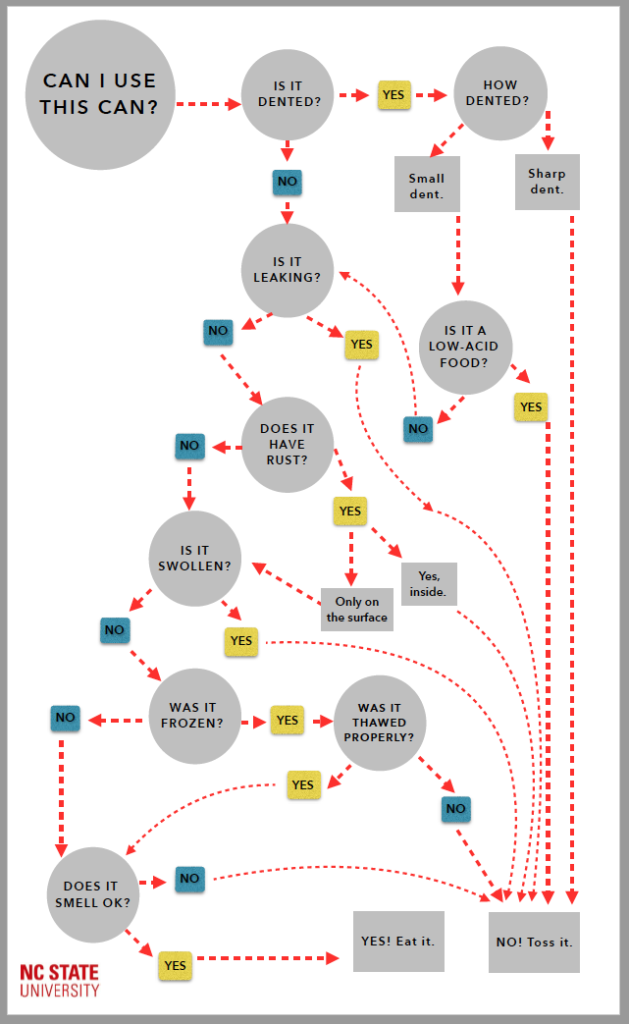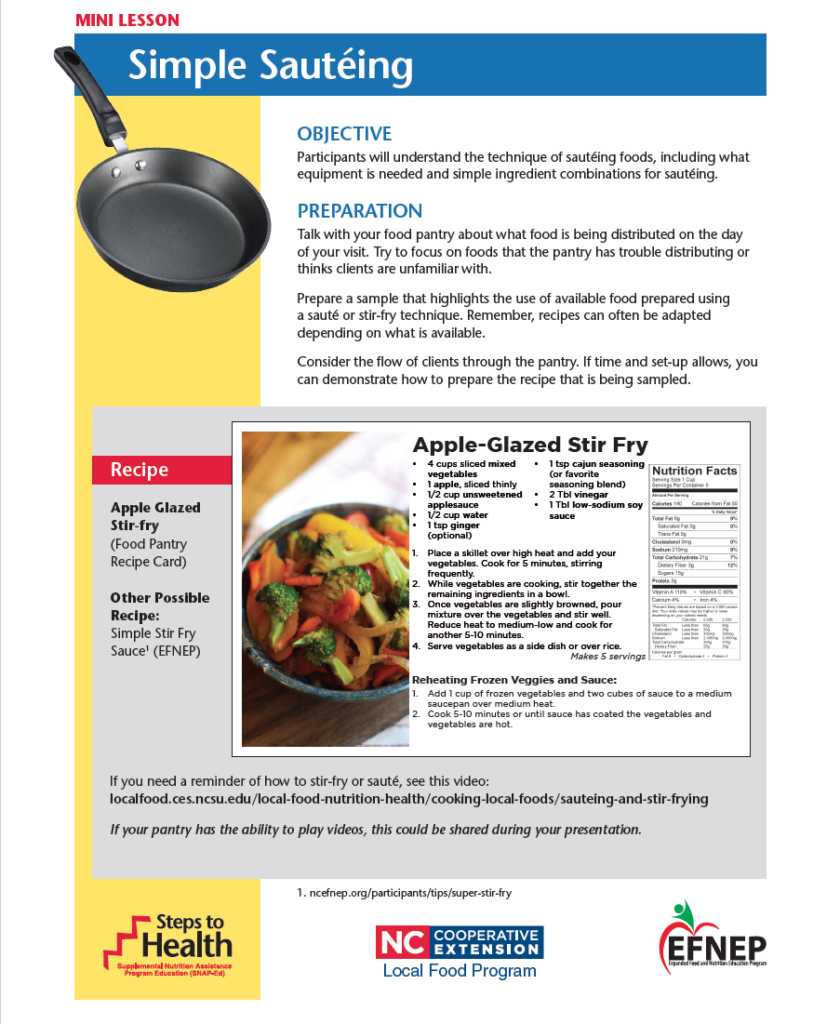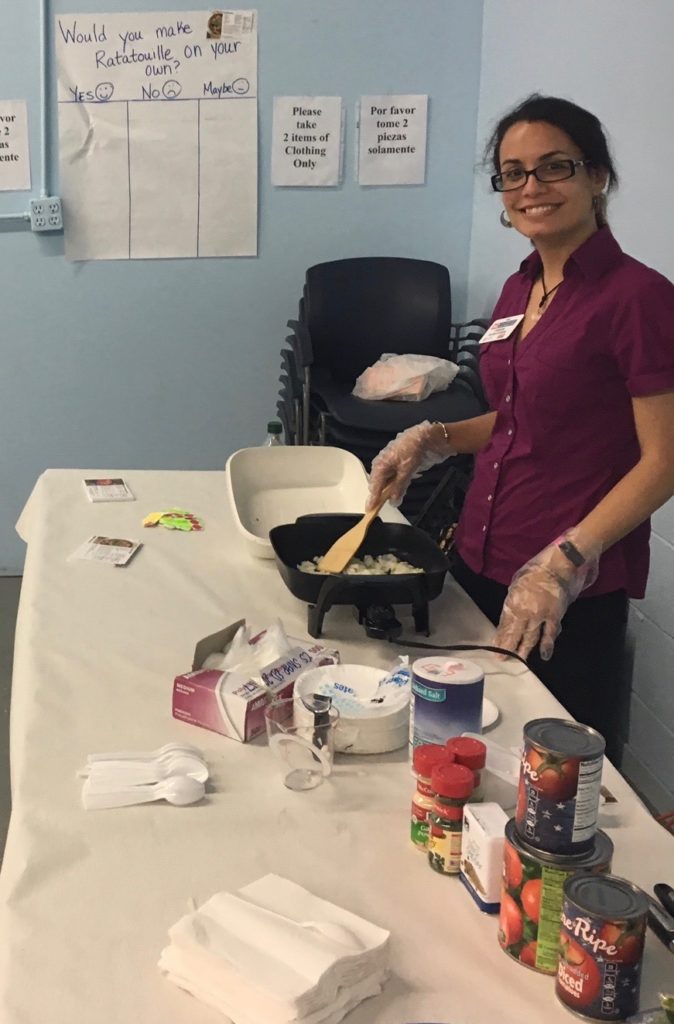Healthy Food Pantry Toolkit
go.ncsu.edu/readext?561919
en Español / em Português
El inglés es el idioma de control de esta página. En la medida en que haya algún conflicto entre la traducción al inglés y la traducción, el inglés prevalece.
Al hacer clic en el enlace de traducción se activa un servicio de traducción gratuito para convertir la página al español. Al igual que con cualquier traducción por Internet, la conversión no es sensible al contexto y puede que no traduzca el texto en su significado original. NC State Extension no garantiza la exactitud del texto traducido. Por favor, tenga en cuenta que algunas aplicaciones y/o servicios pueden no funcionar como se espera cuando se traducen.
Português
Inglês é o idioma de controle desta página. Na medida que haja algum conflito entre o texto original em Inglês e a tradução, o Inglês prevalece.
Ao clicar no link de tradução, um serviço gratuito de tradução será ativado para converter a página para o Português. Como em qualquer tradução pela internet, a conversão não é sensivel ao contexto e pode não ocorrer a tradução para o significado orginal. O serviço de Extensão da Carolina do Norte (NC State Extension) não garante a exatidão do texto traduzido. Por favor, observe que algumas funções ou serviços podem não funcionar como esperado após a tradução.
English
English is the controlling language of this page. To the extent there is any conflict between the English text and the translation, English controls.
Clicking on the translation link activates a free translation service to convert the page to Spanish. As with any Internet translation, the conversion is not context-sensitive and may not translate the text to its original meaning. NC State Extension does not guarantee the accuracy of the translated text. Please note that some applications and/or services may not function as expected when translated.
Collapse ▲OVERVIEW
This toolkit is designed to support N.C. Cooperative Extension agents as they work with food banks and pantries. It draws together resources from multiple programs and topic areas, including: local food procurement; food safety; nutrition education and cooking support; policy, systems, and environmental changes; and evaluation.
On This Page
| Background | Nutrition Education & Cooking Support |
| Local Food Procurement | Policy, Systems & Environmental Changes |
| Food Safety | Evaluation |
- What are food banks and pantries, and how are they different? Check out this document for background information about food banks/pantries, and this video for more information about food insecurity and the role of food banks/pantries.
- Feeding the Carolinas This website lists North Carolina’s seven regional food banks. These food banks serve community-based food pantries and soup kitchens, and can help determine how to best donate surplus food.
- How can agents make connections with food banks and pantries? Steps to Connecting with Food Pantries takes you step by step through the process of identifying local food pantry partners and implementing programming. If you have EFNEP in your county, please work with the Program Assistant, as they may already have established relationships with food pantries in your community.

Donation Stations is a program that seeks to improve access to fresh, locally-grown food while supporting the farmers who grow it. Learn more about the program and how you can get involved by visiting this page.
This Guidebook provides suggestions about working with food banks and pantries to incorporate more local food, including fresh fruits and vegetables and healthy proteins. There are several ways to work with food banks and pantries on local food procurement, including:
This video describes what steps to take to hold a safe and successful volunteer gleaning day and showcases the new Glean Machine. Extension 4-H programs bring volunteers, farmers, and food banks and food pantries together to gather quality produce from farms.
This video shows how Extension connects hunters with landowners and local food pantries to donate venison through the Venison Donation Program.
This video explains the benefits of donating produce for large-scale growers, including questions of liability, food safety, and tax credits. It also demonstrates the scale and efficiency of the food bank system:
 This site on NC State’s Food Safety Portal provides updated resources about working with food banks and pantries on issues of food safety. This includes issues of food distribution and transportation, hand washing, standard operating procedures, and recall protocol.
This site on NC State’s Food Safety Portal provides updated resources about working with food banks and pantries on issues of food safety. This includes issues of food distribution and transportation, hand washing, standard operating procedures, and recall protocol.
:Nutrition Education & Cooking Support
FCS agents and volunteers can support food pantry clients so they know healthy ways to prepare the food that they receive. If you work with organizations that conduct food drives, please share this Healthy Food Drive Donation List.
- Classes: EFNEP’s Food Pantry Classes Guide is a resource guide that provides advice about conducting nutrition education classes at food pantries.
- Taste Tests and Cooking Demos:
- Steps to Connecting with Food Pantries will walk you through the step by step process of building a relationship with food pantries and offering taste tests/cooking demonstrations.
- These Food Pantry Mini-Lessons were designed to guide FCS agents and Extension Master Food Volunteers as they prepare and deliver taste tests, including recipe suggestions and talking points. Mini-Lessons include: Cooking with Microwaves, Roasting, Stir Fry, Dressings and Marinades, Freezing, Adapting Recipes, Knife Skills, Using Ripe Fruits & Vegetables, Eating with the Seasons, Spices and Seasonings, Storage & Shelf Life, and Cooking with Venison.

- Recipe Cards: It is important to choose recipes that not only highlight the products that food pantries are distributing, but which also are sensitive to the budgetary constraints faced by food pantry clients.
- We have received permission to distribute recipe cards developed by the Greater Community Food Bank of Pittsburgh. These cards are designed for low-income audiences, and are very visual for those who may have low literacy levels. Please use this Google Form to request recipe cards (restricted to N.C. Cooperative Extension employees).
- NCCE’s Farmers Market Recipe Cards also use EFNEP and Mixing Bowl recipes, and are therefore a good option for food pantry clients.
- Other Recipe Sources: EFNEP tips and recipes are a great resource, as is the USDA’s Mixing Bowl. Cook Smart, Eat Smart and Med Instead of Meds also have good recipes. Steps to Health also has Harvest of the Month handouts that highlight seasonal items and recipes. If you are interested in using a recipe that is not currently available as a printed recipe card, you can use Steps to Health’s Bits and Bites template.
- Use this Extension Recipe Guidance to assess any recipes your find online.
- Food Pantry Posters: Explore this poster series that features a local fruit or vegetable that is in season for each month of the year. They contain nutrition information, local food facts related to NC agriculture and low-cost recipe ideas.
:Policy, Systems & Environmental Changes
How can we work with food pantries to make the healthy choice the easy choice? There are many resources to help you work with a food pantry to think about how it is set up, signage, and procedures to help encourage healthy choices as well as the dignity of food pantry clients.
- NC State Steps to Health: Partnering with Food Pantries
NC State Steps to Health supports our agent’s efforts in establishing, implementing, and sustaining culturally inclusive food pantries across North Carolina. Encouraging food pantries to think critically about foods collected, purchased, and distributed prioritizes the client’s cultural and nutritional needs and allows pantries to better support their clients.
Steps to Health provides technical assistance, resources, and tools to support food pantry agents. Examples include pantry layout, inventory and distribution model methods, Supporting Wellness at Pantries (SWAP), culturally and nutritionally appropriate foods and donations, nutrition nudges and bundling, nutrition education and food demonstrations, perishable and non-perishable food pantry models, Food Pantry Toolkit training, and community resource connections.
Steps to Health can visit your site and help customize training to meet your food pantry’s needs. . For additional information about receiving Step to Health support, please contact Caren Maloy at cbmaloy@ncsu.edu.
- Nudges: Located on the Healthy Food Bank Hub portal, this video and resource page can be used to help food banks and pantries determine how to set up and promote healthy food in order to increase its utilization.
- Safe and Health Food Pantry Project University of Wisconsin Extension has developed this resource to help food pantries assess their facilities and policies in order to create action plans that improve food offerings.
- Healthy Food Pantry Assessment Toolkit was developed by the Regional Nutrition Education and Obesity Prevention Centers of Excellence- Western Region at Colorado State University. This tool gives food pantries a score depending on how they match with a list of best practices for a healthy pantry environment, and then provides resources to support improving their score. The website includes a recorded training presentation, instruction manual, and matched resource guide of best practice strategies will be available.
It is important to evaluate your efforts so that you can report on all your hard work! Here are some suggestions for evaluation:
- Dot Surveys: Dot surveys are a way to get a quick snapshot of participants’ reactions to the recipe. For example, you can take a piece of flip chart paper, divide it in three sections, with headings such as “Loved it”/ “Liked i
 t”/ “Maybe next time” and then provide participants with stickers to place in the category that best describes how they felt about the recipe they tried. This will help you get a count of how many people you reached, as well as how many people had a positive reaction to the recipe you used. Consider also having a category that assesses people’s interest in making the recipe at home.
t”/ “Maybe next time” and then provide participants with stickers to place in the category that best describes how they felt about the recipe they tried. This will help you get a count of how many people you reached, as well as how many people had a positive reaction to the recipe you used. Consider also having a category that assesses people’s interest in making the recipe at home. - Pounds Donated: If you work with a local farmer or gardener to donate local food, please be aware that one of the Community Development indicators in the Extension Reporting System (ERS) asks about the number of pounds of food donated for vulnerable populations, so keep track of how many pounds are donated so you can report them.






